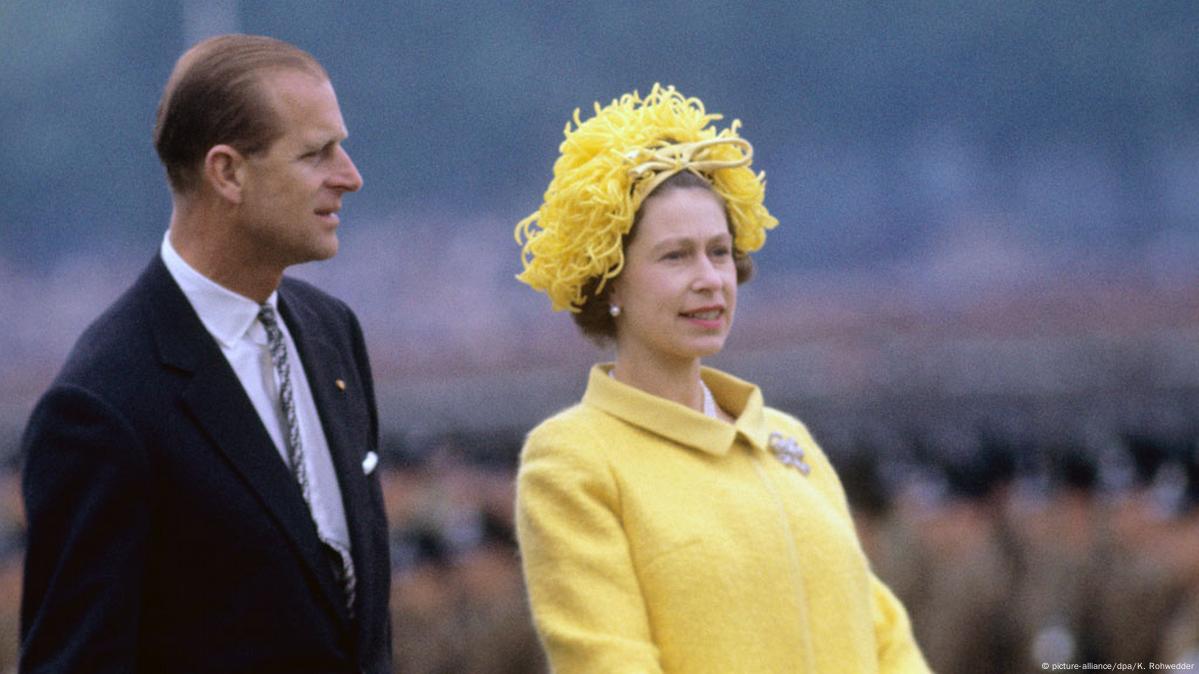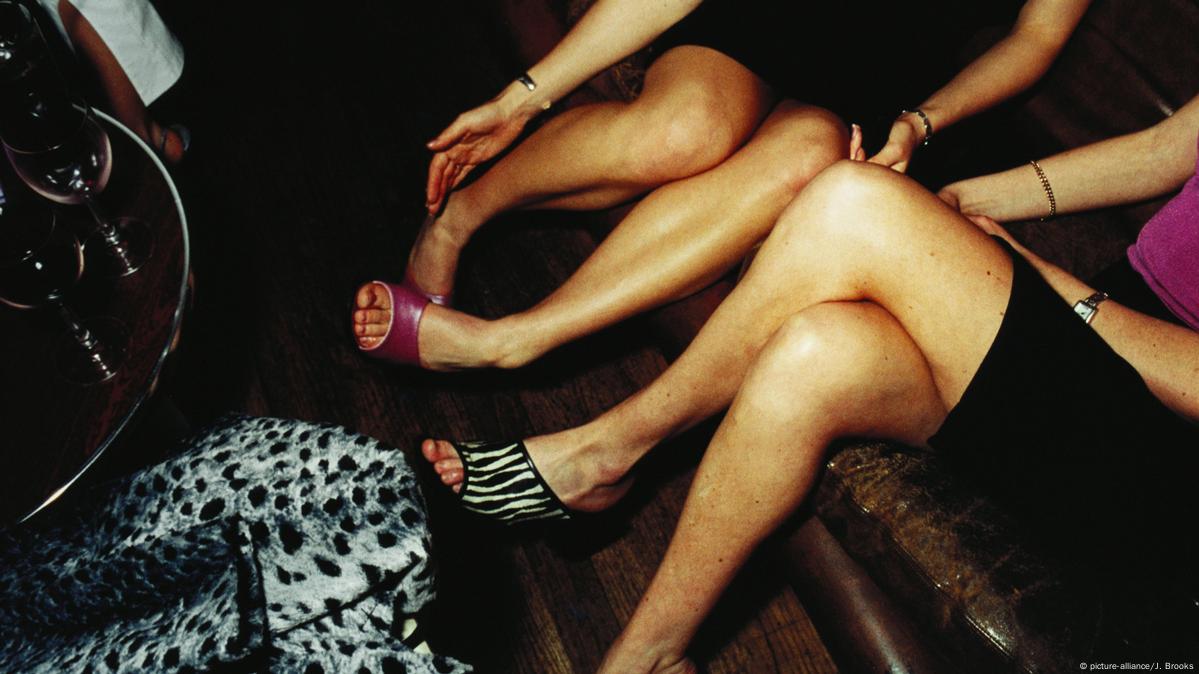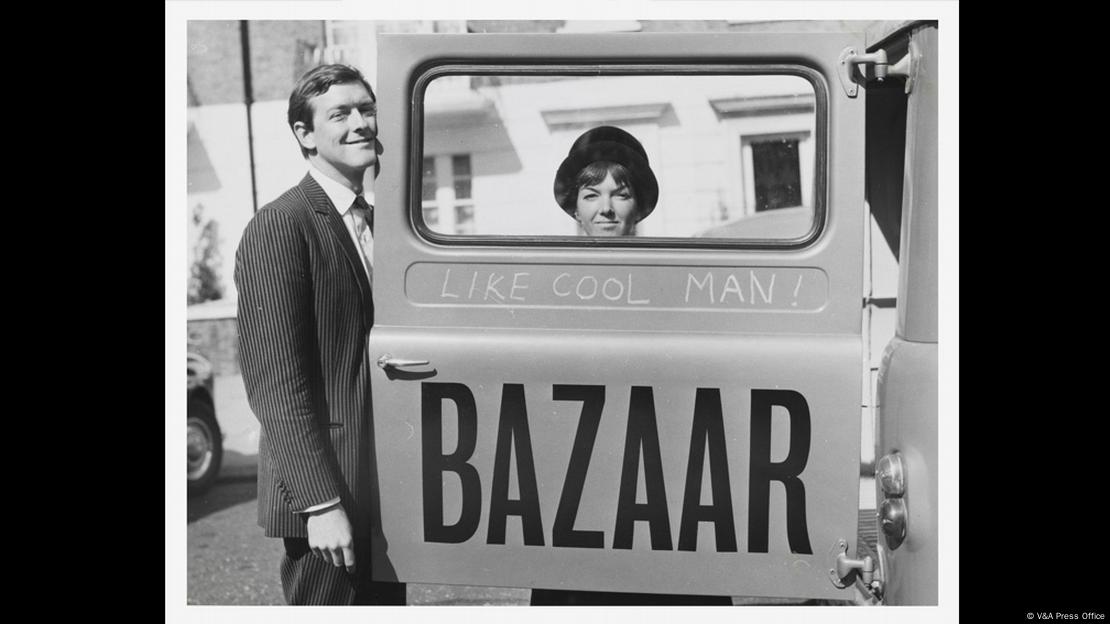RIP

Mary Quant, 'mother of the miniskirt,' dead at 93
Courtney Tenz
One of the 20th century's top fashion designers, Mary Quant has passed away at the age of 93. The trendsetter greatly influenced modern women's style.
How mini-skirts changed the world
It all began at her gran's
A fashion buff in the 1960s, Mary Quant got her first taste of the fashion design life by trimming her grandmother's knee-length skirts. Then she took on the boutique, Bazaar, in London's Chelsea neighborhood, where sold her own tailor-made skirts. These were much shorter than the modest skirts her mother and grandmother had worn — ending at least ten centimeters above the knee. Outrageous!
Short and sweet for the young, modern lady
"I liked my skirts short because I wanted to run and catch the bus for work," Quant once said. The young designer sold not only hip designs in her boutique, she changed the image of the young, modern woman forever with her mini-skirts. But she didn't stop at mini-skirts — always inventing new looks and trying out new materials, like PVC: "Fashion is a very ongoing, renewing thing," she said.
Image: Express/Getty Images

"Swinging Sixties"
The mini skirt became a symbol of London's "Swinging Sixties." Twiggy, the young model with the thin legs, androgynous figure and pixie haircut, wore the short skirts on the catwalks of the world. Members of The Beatles also frequented Quant's boutique to find dresses for their girlfriends; the store was, at that time, on King's Road: the epi-center of "Swinging London."

"Swinging Sixties"
The mini skirt became a symbol of London's "Swinging Sixties." Twiggy, the young model with the thin legs, androgynous figure and pixie haircut, wore the short skirts on the catwalks of the world. Members of The Beatles also frequented Quant's boutique to find dresses for their girlfriends; the store was, at that time, on King's Road: the epi-center of "Swinging London."
Image: Getty Images

King’s Road
Mary Quant never wanted to be the sole recipient of the fame her mini-skirt creation flamed. "The King's Road girls invented the mini-skirt. I had already made the skirts short, but the customers always wanted them shorter," she once said. Yet the style was christened mini, after Quant's preference for the car of the same name.

King’s Road
Mary Quant never wanted to be the sole recipient of the fame her mini-skirt creation flamed. "The King's Road girls invented the mini-skirt. I had already made the skirts short, but the customers always wanted them shorter," she once said. Yet the style was christened mini, after Quant's preference for the car of the same name.
Image: Evening Standard/Getty Images

Mixed messages: adored by the Queen, despised by the pope
When the first young ladies stepped out in public wearing the short skirts, they were issued warnings by stern-faced police officers. Some even had to make sure that such a skirt length was allowed at all. The Vatican condemned the style as lewd, but Queen Elizabeth, seen here in 1965 on her visit to Germany, awarded Mary Quant a medal for her services to the fashion industry the following year.

Mixed messages: adored by the Queen, despised by the pope
When the first young ladies stepped out in public wearing the short skirts, they were issued warnings by stern-faced police officers. Some even had to make sure that such a skirt length was allowed at all. The Vatican condemned the style as lewd, but Queen Elizabeth, seen here in 1965 on her visit to Germany, awarded Mary Quant a medal for her services to the fashion industry the following year.
Image: picture-alliance/dpa/K. Rohwedder
Hyped around the world
The daring idea caught on among designers and the media took a fancy to it. In 1962, "Vogue" showed Quant's designs. By 1964, the mini-skirt had arrived in Germany; a year later, the trend had established itself worldwide. Yet it was not until the end of the 60s that such short skirts also appeared in the collections of renowned French fashion houses such as Yves Saint Laurent and Christian Dior.

Hyped around the world
The daring idea caught on among designers and the media took a fancy to it. In 1962, "Vogue" showed Quant's designs. By 1964, the mini-skirt had arrived in Germany; a year later, the trend had established itself worldwide. Yet it was not until the end of the 60s that such short skirts also appeared in the collections of renowned French fashion houses such as Yves Saint Laurent and Christian Dior.
Image: picture-alliance/J. Brooks

Branching out: cosmetics and accessories
The trend didn't end, even as Mary Quant discontinued her fashion line in 1969 to concentrate on a line of accessories, cosmetics and lingerie. She attributed her getting into the make-up business to an interest in designing "a complete look, from head to toe." Although the designer herself retired in 2000, the eponymous label is still around. Her contributions are on display in London's V&A.

Branching out: cosmetics and accessories
The trend didn't end, even as Mary Quant discontinued her fashion line in 1969 to concentrate on a line of accessories, cosmetics and lingerie. She attributed her getting into the make-up business to an interest in designing "a complete look, from head to toe." Although the designer herself retired in 2000, the eponymous label is still around. Her contributions are on display in London's V&A.
Image: DW
Mary Quant, the visionary fashion designer whose colorful miniskirts epitomized Swinging London in the 1960s and influenced youth culture around the world, has died at the age of 93.
The global editor at large for "Vogue," Hamish Bowles, was keen to emphasize Quant's place in fashion history.
"She was the right person with the right sensibility in the right place at the right time. She appeared on the scene at the exact cusp of the '60s," he said.
Not everyone was enamored with the short skirt.
Coco Chanel said the miniskirt was "indecent" while Sophia Loren publicly claimed the short garment "destroyed the feminine mystique."
Bright colors and innovative fabrics
The designer came of age in post-war London, a place where, she said, "most people had returned to their gardens and allotments hoping life would revert to how it was before the hostilities." It shouldn't have come as a surprise, then, that the young designer who employed bright colors and innovative fabrics drew a lot of attention when she first got her start. After all, as she described it, the city was still full of gentlemen in bowler hats carrying umbrellas. "It was into this world that I launched my new ideas about fashion."
And new they were. After opening her boutique, Bazaar, on King's Road in the early 60s, Quant became well-known for her innovative take on femininity, which was young, colorful and above all, modern. Her ideas about what fashionsuited women best may have been influenced by her close proximity in age to most of her customers.



Mary Quant, the visionary fashion designer whose colorful miniskirts epitomized Swinging London in the 1960s and influenced youth culture around the world, has died at the age of 93.
The global editor at large for "Vogue," Hamish Bowles, was keen to emphasize Quant's place in fashion history.
"She was the right person with the right sensibility in the right place at the right time. She appeared on the scene at the exact cusp of the '60s," he said.
Not everyone was enamored with the short skirt.
Coco Chanel said the miniskirt was "indecent" while Sophia Loren publicly claimed the short garment "destroyed the feminine mystique."
Bright colors and innovative fabrics
The designer came of age in post-war London, a place where, she said, "most people had returned to their gardens and allotments hoping life would revert to how it was before the hostilities." It shouldn't have come as a surprise, then, that the young designer who employed bright colors and innovative fabrics drew a lot of attention when she first got her start. After all, as she described it, the city was still full of gentlemen in bowler hats carrying umbrellas. "It was into this world that I launched my new ideas about fashion."
And new they were. After opening her boutique, Bazaar, on King's Road in the early 60s, Quant became well-known for her innovative take on femininity, which was young, colorful and above all, modern. Her ideas about what fashionsuited women best may have been influenced by her close proximity in age to most of her customers.


Bazaar, the boutique that started it all
Image: V&A Press Office
With her short bob and knee-high boots, Mary Quant championed the mod aesthetic, one which traded sheer stockings for bloomers and stiff bras for flowy baby doll dresses. The look was both reflective of and incendiary to a period of cultural rebellion that would take over England.
'Shorter, shorter'
A trendsetter throughout the "Swinging Sixties," the designer harnessed the spirit of the times and helped contribute, at least stylistically, to the women's movement as she created a powerful role model for the working woman. By creating both the mini-skirt and tailored trousers, Mary Quant laid out a uniform that helped redefine what women wore, a loud and proud style which proclaims: I'll wear what I like, thank you very much.
"I was making easy, youthful, simple clothes, in which you could move, in which you could run and jump and we would make them the length the customer wanted," said Quant. As a young girl, she said, she used to hem her grandmother's skirts ever higher. But at Bazaar, her customers were the ones driving the trend that eventually had Quant christened the mother of the mini-skirt. "I wore them very short and the customers would say, 'Shorter, shorter.'"
Always a risk-taker, once she'd made a name for herself as a designer, Quant embraced new textiles and fabrics as well as mass production techniques that revolutionized high street and helped make her a household name by making her clothing more accessible to all. "Snobbery has gone out of fashion, and in our shops you will find duchesses jostling with typists to buy the same dresses," she was quoted in Vogue as saying.
The designer behind the iconic mini-skirt turned her eye to accessories in the late 60s, creating clogs and knee-high boots out of PVC, pairing them with shiny rain jackets. By the end of the decade, though, she gave up her work with garments and lent her name to a cosmetics line — a line which still exists today, although the 85-year-old has long since retired.
On display at the V&A
Quant's popularity in England and her influence in the fashion world can still be felt more than 60 years after the designer made her debut.
An exhibition at the V&A Museum in London, which opened almost four years ago to the day, aims to trace the designer's career and her influence on style by displaying objects from throughout Quant's career.
To create the exhibition, the museum put out a call for people to dig through their closets and add the occasional unique piece to the collection; they received more than 800 garments and accessories to choose from. Asked by the curators of the exhibition what she thought of her work at the time, Quant replied, "It was a wonderfully exciting time and despite the frenetic, hard work, we had enormous fun. We didn't necessarily realize that what we were creating was pioneering, we were simply too busy relishing all the opportunities and embracing the results before rushing on to the next challenge!"
This article was updated from a previous article published May 4, 2019.
With her short bob and knee-high boots, Mary Quant championed the mod aesthetic, one which traded sheer stockings for bloomers and stiff bras for flowy baby doll dresses. The look was both reflective of and incendiary to a period of cultural rebellion that would take over England.
'Shorter, shorter'
A trendsetter throughout the "Swinging Sixties," the designer harnessed the spirit of the times and helped contribute, at least stylistically, to the women's movement as she created a powerful role model for the working woman. By creating both the mini-skirt and tailored trousers, Mary Quant laid out a uniform that helped redefine what women wore, a loud and proud style which proclaims: I'll wear what I like, thank you very much.
"I was making easy, youthful, simple clothes, in which you could move, in which you could run and jump and we would make them the length the customer wanted," said Quant. As a young girl, she said, she used to hem her grandmother's skirts ever higher. But at Bazaar, her customers were the ones driving the trend that eventually had Quant christened the mother of the mini-skirt. "I wore them very short and the customers would say, 'Shorter, shorter.'"
Always a risk-taker, once she'd made a name for herself as a designer, Quant embraced new textiles and fabrics as well as mass production techniques that revolutionized high street and helped make her a household name by making her clothing more accessible to all. "Snobbery has gone out of fashion, and in our shops you will find duchesses jostling with typists to buy the same dresses," she was quoted in Vogue as saying.
The designer behind the iconic mini-skirt turned her eye to accessories in the late 60s, creating clogs and knee-high boots out of PVC, pairing them with shiny rain jackets. By the end of the decade, though, she gave up her work with garments and lent her name to a cosmetics line — a line which still exists today, although the 85-year-old has long since retired.
On display at the V&A
Quant's popularity in England and her influence in the fashion world can still be felt more than 60 years after the designer made her debut.
An exhibition at the V&A Museum in London, which opened almost four years ago to the day, aims to trace the designer's career and her influence on style by displaying objects from throughout Quant's career.
To create the exhibition, the museum put out a call for people to dig through their closets and add the occasional unique piece to the collection; they received more than 800 garments and accessories to choose from. Asked by the curators of the exhibition what she thought of her work at the time, Quant replied, "It was a wonderfully exciting time and despite the frenetic, hard work, we had enormous fun. We didn't necessarily realize that what we were creating was pioneering, we were simply too busy relishing all the opportunities and embracing the results before rushing on to the next challenge!"
This article was updated from a previous article published May 4, 2019.
No comments:
Post a Comment